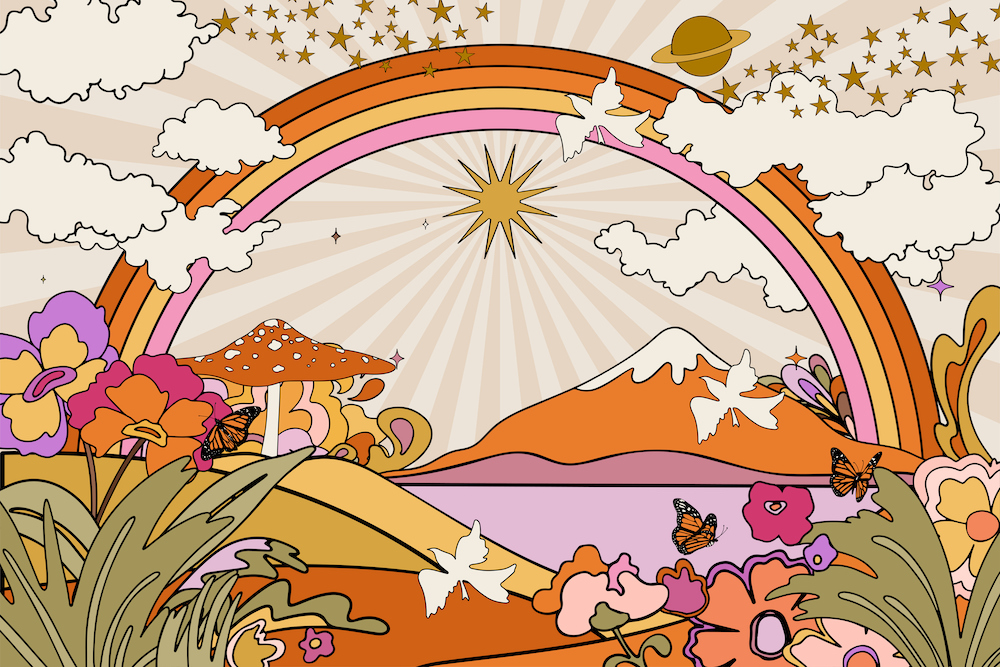
Deep in the jungles of Africa, a spiritual rite is being administered. Deep orange torches burn as Bwiti initiates–a religion native to the Gabon region–suck down handfuls of dry, black bark–iboga.
What is ibogaine? For the Bwiti, Ibogaine is the drug at the very core of this ritual experience. It is the psychoactive foundation of this psychedelic mush–and their pathway to God.
Here, ibogaine is the essence that provides the Bwiti with spiritual insights, giving them the trance-like energy to spend days without sleep. It fuels a search for something deeper inside themselves–while dancing under flames into the darkness of the night.
This is the origin of Ibogaine.
What is Ibogaine?
Ibogaine is a complex drug. Its origins come from a plant found in Gabon called iboga, the iboga shrub, or Tabernanthe Iboga. Used for centuries as a spiritual and religious medicine in Africa, the journey of this complex chemical has been nothing short of incredible. Over the last few hundred years ibogaine has gone from being synthesized, celebrated, and studied to being blacklisted and banned–all while making its way from a simple jungle root to fascinating medicinal savior.
In this article, we will take a look at ibogaine–what it is, its history, research, development, legality, and where ibogaine exists today–and get more acquainted with the amazing potential this drug may have for humanity.
History of Iboga and the Bwiti

The origins of ibogaine are deep. It hails naturally, in the form of iboga, from the depths of central West Africa–the countries of Gabon, Cameroon, and the Congo). According to the Bwiti, a religion native to the area, the knowledge and use of iboga was passed down from Pygmy tribes centuries before.
Today, the Bwiti–a word meaning “emancipation”–use the iboga’s root bark to produce a psychedelic experience, as part of their spiritual rituals. Its purpose is not only religious, but also offers help with building and strengthening their communities and families, accessing deep spiritual insights, and mental and physical healing. The experience also serves as a rite of passage into adulthood.
During these Bwiti rituals, the root of the iboga plant is dug up, the bark is scraped off, and consumed by initiates and members. They build giant bonfires and light torches which are accompanied by loud drum music and chants led by the community healer and shaman, called N’ganga.
This ritual goes well into the night, where the backdrop of music and darkness enhance visuals from the psychedelic iboga plant.
For centuries, this was how iboga was used–undiscovered by the world outside.
French Explorers, Ibogaine Extraction, and Lambarene
In the 19th century, the French began exploring parts of Africa, including having contact with the people of central west Africa, and the Bwiti specifically. This is where iboga was first recognized as an interesting, and unique, jungle plant.
Curious explorers brought the iboga plant back to France. By 1901, two scientists–Dybowski and Landrin–were studying the iboga plant, and were able to successfully extract ibogaine out of the iboga root bark. As the most prominent psychoactive compound found in the iboga shrub, they hoped ibogaine would offer a medical benefit, and began testing and researching it for potential medicinal uses.
Eventually, ibogaine was marketed and sold to the public as a drug called Lambarene. Lambarene was a low dose of ibogaine, and was mostly used by athletes as a performance enhancing drug and mild neurostimulant.
It was sold up until the late 1960’s, when ibogaine and other psychedelics found themselves caught in government crosshairs and were systematically restricted for any and all uses.
Discovery of Ibogaine to Treat Addiction

It was during the 1960s that ibogaine was discovered to have a substantial impact on addiction and dependence.
It wasn’t discovered in a lab, though, but by a 19 year old named Howard Lotsof.
Lotsof’s story is a remarkable series of coincidences. He was eating breakfast with a friend, who also happened to be a chemist, while rifling through a freezer of psychedelic compounds and chemicals.
They happened upon ibogaine, and the chemist explained to Lotsof that it was a psychedelic found in the depths of Africa that, at a high dosage, offered an intense, 36-hour psychedelic experience.
Intrigued, Lotsof decided to try it out.
Interestingly, at the time, Lotsof was also addicted to heroin. He was using it every day, along with many of his friends, and had found it difficult to stop.
Lotsof’s Ibogaine Experience
After an intense experience with the ibogaine, Lotsof remembers seeing the sunrise the next day, and realizing, as he recalls, “I was not frightened, and perceived that my whole life had been full of fear.”
After some reflection, he also had another realization. He no longer had any cravings for heroin.
Lotsof said, “Where previously I had viewed heroin as a drug which gave me comfort, I now viewed heroin as a drug which emulated death.”
He was not only freed from his heroin dependence, he also had no desire to use the drug ever again.
Lotsof approached this new discovery with scientific curiosity, and he decided to do an experiment.
His idea: Give ibogaine to a few of his friends and study the results.
The results were the same. Not only were they able to stop using heroin almost instantly, they also felt dramatically different about their drug dependence.
Lotsof concluded that ibogaine had amazing potential to treat drug addiction, and spent the rest of his life successfully studying ibogaine and its ability to help those struggling with drug and heroin addiction.
Chemical Structure
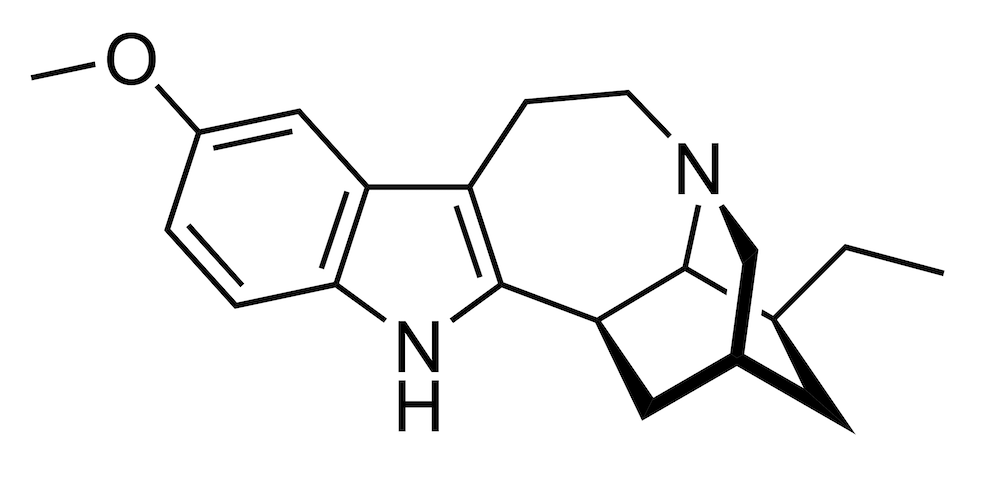
Now that we understand the origins and discovery of ibogaine, let’s look closer at what ibogaine is, how it works, and some of the research conducted on the effects of ibogaine.
Name: Ibogaine, Ibogain, Iboga, Eboka
Other Names: 12-methoxyibogamine
Plant Origins: Tabernanthe iboga, Voacanga africana, Tabernaemontana undulata
Formula: C20H26N2O
Short Description: Ibogaine is a psychoactive chemical found in several plants with origins in Africa. It has been used for generations, in the form of the iboga root, for healing and religious rituals. More recently, ibogaine was discovered as a treatment for strong addictions, like heroin and alcohol, and is currently being used in medical facilities in several countries around the world where it has not been made illegal.
Ibogaine: Mechanisms of Action in the Brain
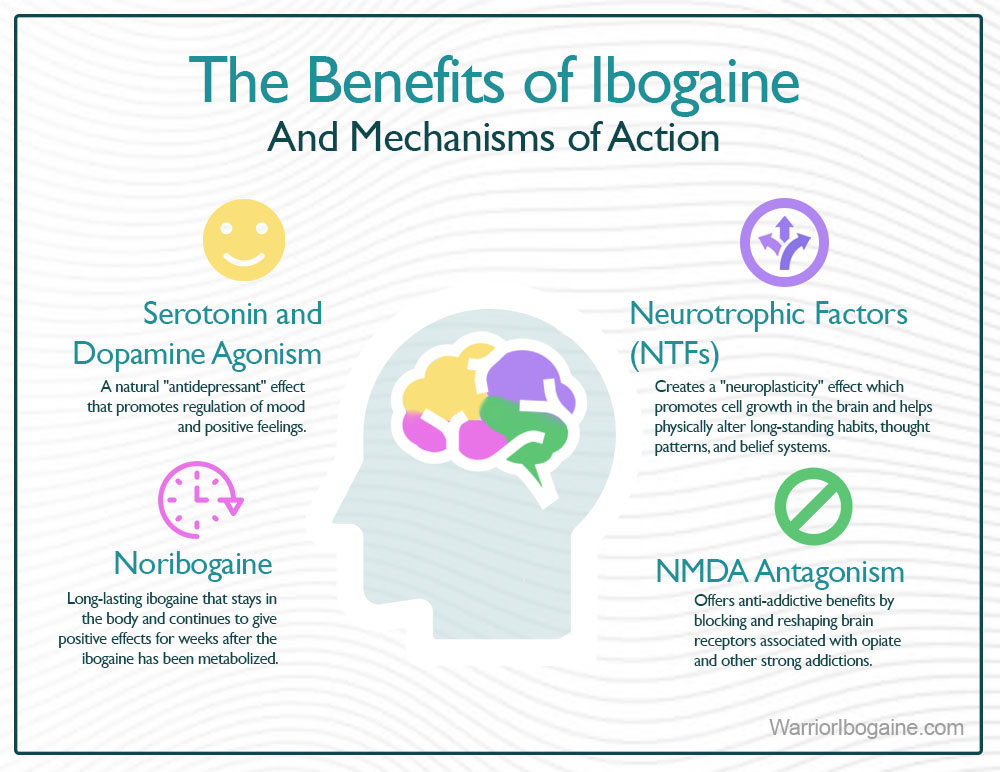
How does ibogaine work in the brain exactly? The answer is, we really can’t say how it works with 100% certainty. . There have just been too few studies on ibogaine for us to fully understand its exact mechanism of action inside the brain.
That does not mean there haven’t been studies, or that there aren’t strong theories on the subject. It simply means none of this is a proven fact.
As science tends to do, in order for something to be a proven fact, there needs to be deep understanding and knowledge on the subject.
With that being said, here are some of the areas of the brain and nervous system that ibogaine may affect, and its potential mechanisms of action.
Neurotrophic Factors (NTFs)
Neurotrophic factors, or NTFs, are a family of proteins that support cell protection and growth–which ibogaine also seems to do.
Although it may sound similar, neurotrophic is not to be confused with nootropic–or the over the counter drug thought to increase brain power and memory.
Many have not heard of the term NTFs or neurotrophic factors, but a common term many have heard is “neuroplasticity.”
Neuroplasticity, meaning the ability for the brain to change.
The purpose of neuroplasticity is promoting new cell growth as well as affecting the brain’s response to stimuli. This means, if someone had a previous response to a difficult memory, or certain feelings about using a drug, the neuroplasticity mechanism of ibogaine may have an impact on changing and shaping these persistent, deep-rooted beliefs.
Thus ibogaine may physically change the structure of the brain and help the user make changes to current thought and belief systems. The impact of NTFs could be the primary reason ibogaine is thought to “reset” or “rewire” the brain.
NMDA Antagonism
NMDA receptors are receptors in the brain and nervous system that are triggered by an amino acid called glutamate. Opiates, alcohol, and other drugs operate on these receptors, creating a chemical feedback loop that causes addiction.
The antagonism, on the other hand, means opposition, or to oppose.
Together, NMDA antagonism means that ibogaine actively operates to interrupt this chemical feedback loop by acting as an antagonist in the receptors where addiction has operated in the brain.
Drugs like methadone and tramadol are also NMDA antagonists.
This is why ibogaine is thought to have such a drastic impact on drug withdrawal symptoms, and especially opiate withdrawals, and why ibogaine seems to be able to eliminate these opiate withdrawals overnight.
This mechanism might be literally “interrupting” the drug addiction pattern in the brain.
Serotonin and Dopamine Agonism
The opposite of antagonism is agonism. Thus, ibogaine–and its longer lasting, metabolized form noribogaine–seems to operate as a serotonin and dopamine agonist, or promoter.
Serotonin and dopamine are both chemicals in the brain used for regulation. Often, things like sleep, mood, satisfaction, and behavior are all regulated by dopamine and serotonin. They are important chemicals for living a happy and balanced life, but can be misregulated in heavy drug users.
We often talk about addiction being so hard to break because of how depressed the individual feels when trying to get off of drugs.
Usually, this is because the body’s natural drugs that would normally regulate our happiness and mood, have little or no effect in the brain of heavy drug users, or someone suffering from depression or PTSD.
It can take weeks, sometimes even longer, for the body’s natural drug production to have a normalized impact.
This is potentially another reason withdrawals from these drugs are so severe and so difficult to overcome.
However, as a serotonin and dopamine agonist, ibogaine acts like an antidepressant, and helps create an environment where the body’s natural drug production can have a positive impact in these areas again.
The serotonin receptors are also where the psychedelic experience is thought to originate. This mechanism of action may also explain ibogaine’s psychoactive properties.
Noribogaine–Longlasting, Metabolized Ibogaine
When ibogaine is consumed, it is metabolized and transformed into Noribogaine. This is important for the anti-addictive, antidepressant, and potentially the negative impacts of ibogaine.
Ibogaine itself has a half life of 4-7 hours.
A half life is the amount of time it takes for the body to get rid of half, or 50%, of the drug concentration in the body.
Thus at:
- 1 Half Life – 50% of the drug remains
- 2 Half Lives – 25% of the drug remains
- 3 Half Lives – 12.5% of the drug remains
- 4 Half Lives – 6.25% of the drug remains
- 5 Half Lives – 3.13% of the drug remains
At about five half lives, the drug is considered clinically eliminated as the body works to remove what little is left.
For ibogaine, within 48-72 hours the majority, if not all, of the drug is out of the user’s system.
Attributes of Noribogaine
However, ibogaine converts, or more appropriately metabolizes, into noribogaine while in the body. Noribogaine has a much longer half life–28-49 hours. So, where ibogaine may take only a few days to get completely out of the system, noribogaine can take weeks for the body to metabolize.
Noribogaine’s positive effects may include:
- Anti-addictive properties–reduces cravings and withdrawal symptoms for a time after taking ibogaine.
- Antidepressant properties–alleviating symptoms of depression, helping the user feel better, happier, and more fulfilled for a time.
This is another reason why ibogaine is thought to have such a long lasting effect on addiction and other serious disorders. The noribogaine remains in the user’s system for much longer after consuming ibogaine, offering benefits that last for weeks longer than the initial dose.
However, the lasting effect of noribogaine may come with a potential cost. The noribogaine acts like ibogaine in the system. If the user were to continue taking ibogaine, or even take more ibogaine within a few weeks of the initial dose, the “build up” effect could cause an overdose which could have dangerous, or even deadly, consequences.
Noribogaine may also impact any illicit drugs used by the individual. The mix of noribogaine, and the potentially dramatic reduction of drug tolerance, may cause a greater chance of overdose for an individual who relapses.
The Psychedelic Experience of Ibogaine
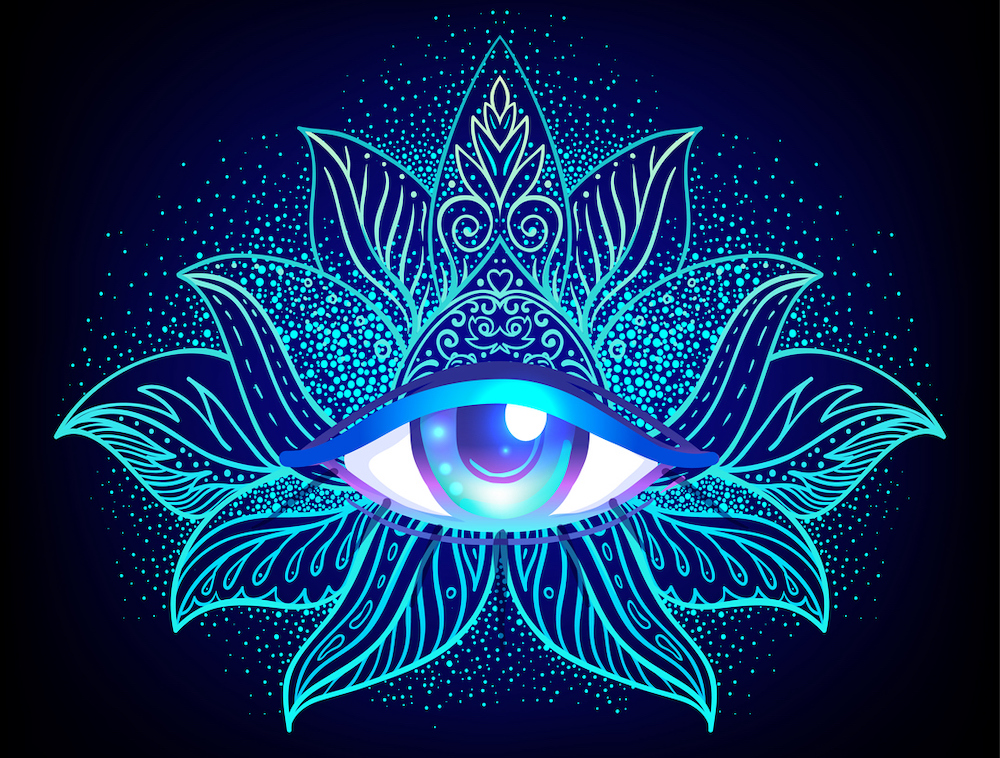
Let’s look at the effects of ibogaine for those who take it. What exactly does the ibogaine do? How long does it normally last? And what should someone expect when taking ibogaine?
To understand better we can learn more from Dr. Kenneth Alper, a psychiatric scientist from the New York University School of Medicine.
Dr. Alper has dedicated much of his career to studying psychoactive compounds such as psilocybin (magic mushrooms) and ibogaine.
He breaks the ibogaine experience into three distinct phases.
Phase I (4-8 Hours) – “Waking Dream”
The first phase of the ibogaine experience is the “waking dream” phase. This is the most intense portion of the ibogaine experience. Here the user often enters a dream-like journey through past life experiences. The user might have auditory changes, visions, and other changes related to a deep psychedelic experience.
During this phase the user may experience:
- Nausea
- Vomiting
- Audible Hallucinations
- Visual Hallucinations
- Rapid Heart Rate
- Dry Mouth
- Inability to Move
It is here that many who are suffering from trauma find themselves face-to-face with life experiences and decisions that may still cause harm.
As Gabor Mate says, “Trauma is the invisible force that shapes our lives. It shapes the way we live, the way we love and the way we make sense of the world.”
Many conditions–addiction, anxiety, depression, PTSD, etc.–are seen as the reaction to underlying trauma caused from the past. Those experiencing these conditions often report that during this first phase of ibogaine they confront, discover, and potentially resolve these internal conflicts.
Phase II (8-20 Hours) – “Introspection”
The second phase of ibogaine is the introspective phase. During this time, users report a heightened awareness. They often spend time in deep, focused thought, reflecting on the experiences presented to them during the first phase.
Phase III (Up to 72 Hours After Ingestion) – “Afterglow”
The last phase of ibogaine is usually described as the residual, or afterglow phase. Senses are heightened but sleep is difficult. The world is vibrant, but the psychedelic effects of the ibogaine have mostly worn off.
Psychedelic Effects are Not Certain
This is generally what an individual can expect when taking a high dose of ibogaine. However, it is important to note that not all of those who take ibogaine will have a strong psychedelic experience. For reasons that are not understood, a certain percentage do not experience the strong psychedelic effects from the first phase of ibogaine.
Ibogaine Research
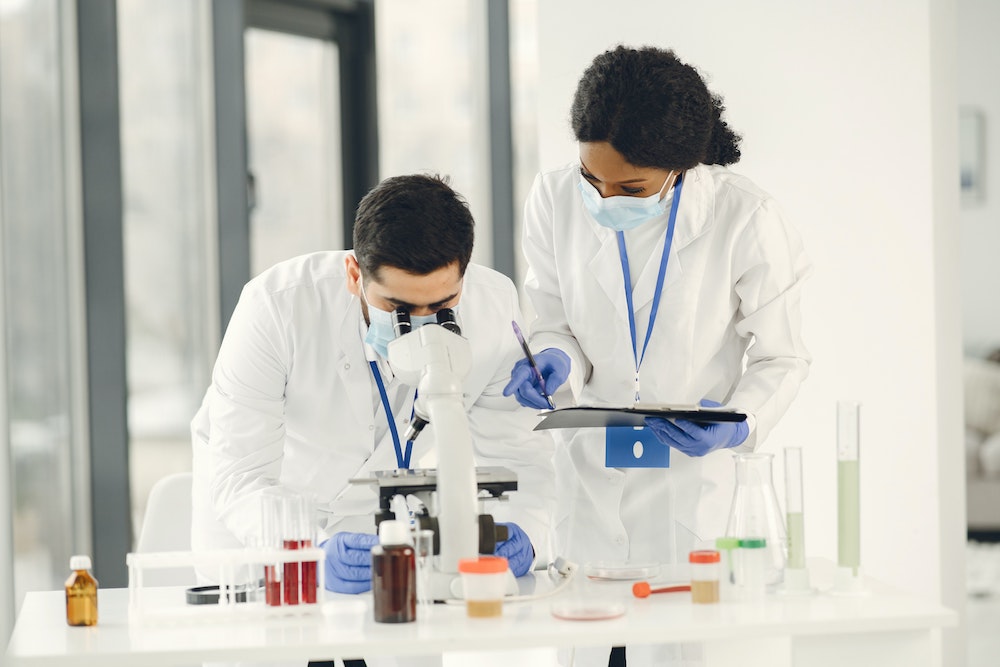
Currently, studies on ibogaine as a treatment for various disorders and addictions are limited. With the bans set in place in the 1960s and 70s, it is extremely difficult for scientists and researchers to conduct studies on ibogaine.
However, that does not mean studies aren’t, and haven’t, been conducted. It simply means that studies are difficult to get approval for, especially in more medically advanced countries, and are limited in size and scope.
We still know much less than we could, or should, about ibogaine and what it can offer us as medicine, and as a society.
With the potential that ibogaine has shown throughout the last century, we assume it would be a top priority, especially considering the negative impacts that addiction has globally.
Unfortunately, it has been neglected. There are a few recently completed studies, and many noble researchers are putting their reputations on the line to get more research approved. However, studies at a greater magnitude still need to be completed.
With that, let’s examine results from past studies.
Research into Ibogaine’s Effects on Addiction
Research into ibogaine as a treatment for drug addiction has been limited and controversial. Because of the sweeping bans on psychedelics during the 1960s, there is little to no research on ibogaine done in the USA, and research on ibogaine, as well as other psychedelics, is still severely restricted and discouraged.
That being the case, the majority of studies done on ibogaine have been for addiction. Many studies conclude that ibogaine has positive effects as a treatment for addiction, and that further study should be conducted.
Here are some takeaways from these studies.
- Ibogaine users saw a “significant reduction” in opiate withdrawals and cravings based on both the Subjective Opiate Withdrawal Scale (SOWS) and the Clinical Opiate Withdrawal Scale (COWS)–both measurements used in clinical studies to determine the effectiveness of drugs on opiate withdrawal symptoms.
- Ibogaine users saw a reduction in withdrawals and cravings from opiates for 1-3 months after dosage.
- Ibogaine users experienced “important hallucinations,” offering clues that helped them understand their opiate addiction on a deeper level.
- Ibogaine may offer a 75% success rate in treating opiate addiction after a 12 month period.
- Ibogaine may be dangerous and potentially fatal, especially for those with preexisting heart or other conditions or when taken when certain drugs, like suboxone and methadone, are still in the system.
Studies on Ibogaine and Non-Opiate Addictions
There are also a few studies on ibogaine for other, non-opiate drugs.
Some of these conclusions have shown:
- Ibogaine may offer a reduction in usage and withdrawal from cocaine addiction and dependence.
- Ibogaine may offer positive outcomes for those with alcoholism or alcohol addiction.
- Ibogaine may have positive impacts on nicotine withdrawal and addiction.
- Ibogaine may have positive effects on methamphetamine usage and addiction.
As previously stated, many of these studies involved small test groups, often less than 100 individuals.
However, the consensus remains the same: Ibogaine shows promise in treating various addictions at a level that has not been discovered in other treatment options.
There is still much research and study to be done on ibogaine for addiction, but preliminary studies, as well as anecdotal evidence, show that ibogaine has a positive effect on reducing drug cravings for opiates and other drugs.
Research into Ibogaine’s Ibogaine Effects on PTSD
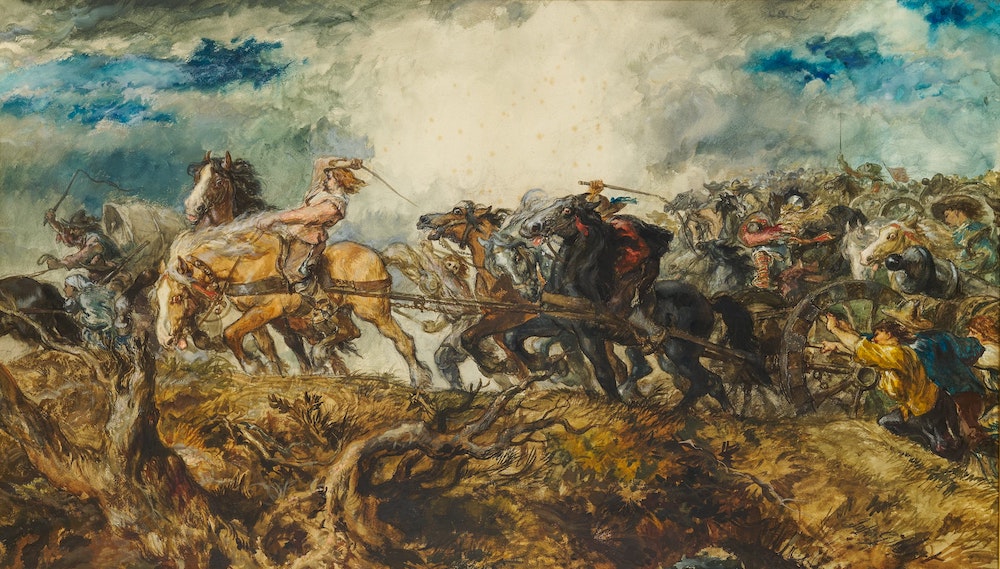
Those who experience high levels of trauma, often associated with soldiers in the battlefield, can face extreme difficulty in dealing with the effects of this trauma. These individuals are diagnosed with post-traumatic stress disorder, or PTSD.
PTSD is extremely debilitating. It can cause nightmares, flashbacks, depression, anxiety, suicidal thoughts, congitive impairment, and can make life almost impossible to live.
Ibogaine, as well as other psychedelics, is currently being studied as a treatment option for those diagnosed with PTSD and other traumatic disorders.
The hypothesis behind ibogaine for PTSD is the way it works in the brain. Ibogaine is thought to reset and rewire the brain’s neurochemistry. Along with the intense psychedelic experience, and the potential for ibogaine to help users engage with their past from a different perspective, this function of ibogaine may benefit those suffering from PTSD.
Studies and surveys show ibogaine offers positive outcomes to those impacted by PTSD by dramatically reducing suicidal thoughts, cognitive impairment, depression, anxiety, and, generally, symptoms associated with PTSD.
Research into ibogaine for post-traumatic stress disorder, or PTSD, has been limited, but from completed studies, ibogaine shows promise.
Research into Ibogaine’s Effects on Depression and Anxiety
There are very few studies on ibogaine and its effects specifically on depression and anxiety. However, because of studies on psilocybin for these mental issues, ibogaine, like other psychedelics, is a strong candidate and has shown promise as a treatment option.
In one study done on microdosing ibogaine for depression, the patient showed strong initial improvement. After 15 days “she reported increased mental clarity, organized thinking, and positive prospects regarding the future.”
These positive effects of ibogaine as a treatment for depression lasted more than 90 days after treatment.
Other studies on addiction have reported those struggling with addiction saw a significant reduction in their symptoms of anxiety and depression. Although this may be related more to addiction than simply depression and anxiety, it does show promise.
More research must be done on ibogaine before we can have the clarity we need to make strong statements on ibogaine for depression and anxiety, but it does seem to have a positive impact on the underlying symptoms.
Other Ibogaine Studies and Potential Treatment Uses
Preliminary data suggests ibogaine could be a treatment option for Alzheimer’s.
Because of its mechanism of action, ibogaine may be studied as a treatment for Parkinson’s disease.
Ibogaine could also possibly have components similar to those used to treat cancer.
There is very little data on these potential treatments, but ibogaine may prove to be useful in future studies.
Safety and Toxicity Related to Ibogaine
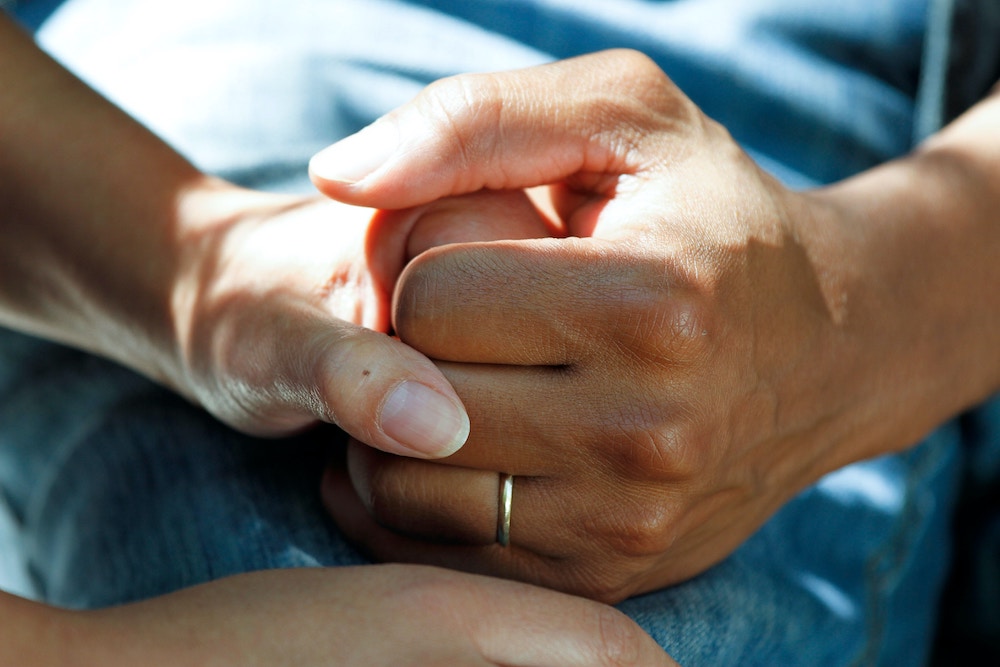
Ibogaine is not without its potential safety issues. In the past, there were several fatalities from ibogaine use. And, although the overall percentages are low, this does not mean that ibogaine is completely safe for use–especially in a non-medical setting.
Over its history, studies recorded approximately 33 fatalities from ibogaine use. However, many of these fatalities were before the dangers of ibogaine were understood. Or, more accurately, it was because of these 33 fatalities that scientists were able to determine some of the dangers associated with ibogaine.
18 of these 33 deaths were related to pre-existing heart conditions. This, along with other studies on ibogaine and its effects on the heart–more specifically how ibogaine prolongs QT intervals–demonstrate the risks of ibogaine. These risks are the key reason prescreening and testing must happen before treating individuals with ibogaine.
12 of these 33 deaths were associated with drug contraindications–drugs that could have potentially dangerous effects when mixed with ibogaine. Through this, and other studies, we determined that ibogaine may have fatal interactions when present with drugs such as methadone, suboxone, methamphetamine, cocaine, alcohol, or other hard drugs.
The reason clinics conduct prescreening and drug testing before ibogaine treatment is to ensure these contraindicated drugs are not present.
These findings, and clinics that have taken this information into account in their treatment protocols, have substantially reduced the likelihood of death from ibogaine ingestion. However, that does not completely remove the dangers. As Dr. Alper concludes: “These figures give a ratio of 1 ibogaine-related death to every 427 treatment episodes.” Some without identifiable pre-existing conditions or drug contraindications.
Known Interactions and Contraindications
Contraindications are drugs or substances where, when taken with ibogaine, can have dramatically negative effects or even lead to death.
Here are the known contraindications with ibogaine.
Medications:
- Antidepressants
- Antihistamines
- MAOIs
- SSRIs
- Antipsychotics
- Antifungals
- QT-Interval Drugs
- Liver Medications
- Anticholinergic drugs
- Glaucoma Medications
- Alzheimer’s Medications
- Cholinergic Medications
Drugs (Must be out of the system completely):
- Cocaine
- Methamphetamine
- MDMA
- Kratom
- Methadone
- Buprenorphine (Suboxone)
- Alprazolam (Xanax)
- Paroxetine (Paxil)
Foods and Supplements to Avoid:
- Grapefruit
- Licorice
- Pomelo
- Garden Cress
- Asafoetida
- Buckthorn
- Horsetail
- Black Cohosh
- St. John’s Wort
- Valerian Root
- Kava
- Cascara Sagrada
- Quinine and Bitter Orange
- Curcuma
- Black seed
- Yellow Dock
- Senna
- Goldenseal/Berberine
- Celery seed
- Aloe Vera (Orally)
- Scotch Broom
Legality of Ibogaine
As previously discussed, ibogaine became illegal with other psychedelics in the USA in 1967.
Currently, ibogaine is illegal in most countries, however, those laws are varied, and there are many “gray areas” where ibogaine is not legal, but not illegal.
Here is a list of ibogaine’s legality by country.
Illegal in All Forms (Possession, Sale, Transportation, or Cultivation):
- United States
- France
- Switzerland
- Sweden
- Norway
- Italy
- Israel
- Ireland
Controlled (Certain Permissions for Medicinal or Research Purposes)
- Australia
- Brazil
- Canada
- Denmark
- Hungary
- South Africa
- Uruguay
Legal to Possess Only:
- Finland
Illegal but Decriminalized:
- Portugal
No Regulation:
- Costa Rica
- Gabon
- Germany
- Mexico
- Netherlands
Also, a few cities in the USA have decriminalized ibogaine along with other natural psychedelics.
Current Decriminalized USA Cities:
- Oakland, CA
- Santa Cruz, CA
- Ann Arbor, MI
- Washington, DC
- Northampton, MA
- Cambridge, MA
- Washtenaw County, MI
We work to keep this list up to date. However, this is just a portion of the countries in the world, and we may not be aware of some laws. The world of psychedelic law is also changing, so it’s important to note that these laws may change at any time.
Potential Threats to the Iboga Plant
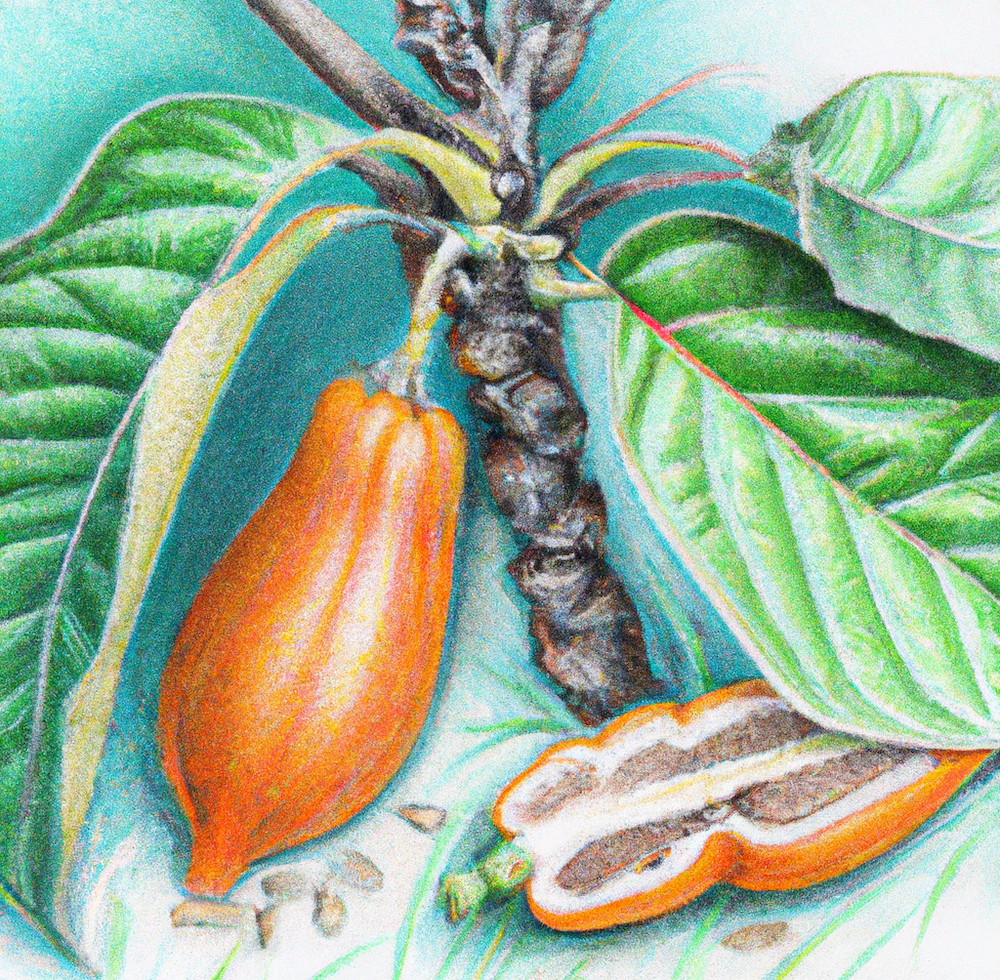
Psychedelics often come in two different forms: natural or synthetic. While synthetic psychedelic compounds are easy to supply, natural forms often face natural threats. Because ibogaine comes from iboga, a natural plant grown in Gabon and other parts of Africa, it has a higher likelihood of facing dangers of underplanting and overharvesting.
A sharp rise in the use of the iboga plant over the last few decades, and with that usage continuing to rise, has caused concern that the iboga shrub will start becoming overharvested, scarce, and in danger.
Also, due to potential climate change effects, there is a higher chance that iboga will be more difficult to grow, or will grow less pervasively, in its native region.
Iboga is now in a position where some worry about overuse and a potential future threat to the plant.
The problem is not without solutions, however, as the iboga plant, or Tabernanthe Iboga, is not the only plant containing the ibogaine compound. There are two other plants, the Voacanga Africana, and Tabernaemontana Undulata, that also contain ibogaine.
Ibogaine can be sourced from these plants–but not at the necessary medical purity.
Currently, it is imperative that iboga and ibogaine clinics, practitioners, and those enjoying this plant and its benefits be aware of the potential threats to the iboga shrub. We must do what we can to prevent threats to this plant in its native habitat.
Current Ibogaine Research and Developments
There are currently very few active, clinical studies involving ibogaine. Whether or not these studies make it to the trial phase is still unknown.
Here are links to these current trials and studies on ibogaine.
A Study of Oral Ibogaine in Opioid Withdrawal
Location: United Kingdom
Status: Recruiting
Last Updated: August 2022
Preliminary Efficacy and Safety of Ibogaine in the Treatment of Methadone Detoxification
Location: Spain
Status: Recruiting
Last Updated: August 2022
We work to keep this list updated, however, it may not be complete as we may not be aware of some studies, or pending studies.
What is Ibogaine?
Ibogaine has a deep and rich history. It also has demonstrated potentially meaningful uses for medicine, science, and for society in the future.
As a jungle plant, it has brought together communities and helped people find god.
As a medicine, it has helped people fight long lasting addictions and change their lives.
We are still learning so much about ibogaine, and hopefully this trend continues–or better yet accelerates–so we can all benefit from ibogaine and its potential.
As an amazing chemical construction of mother nature, ibogaine is truly a work of art.


